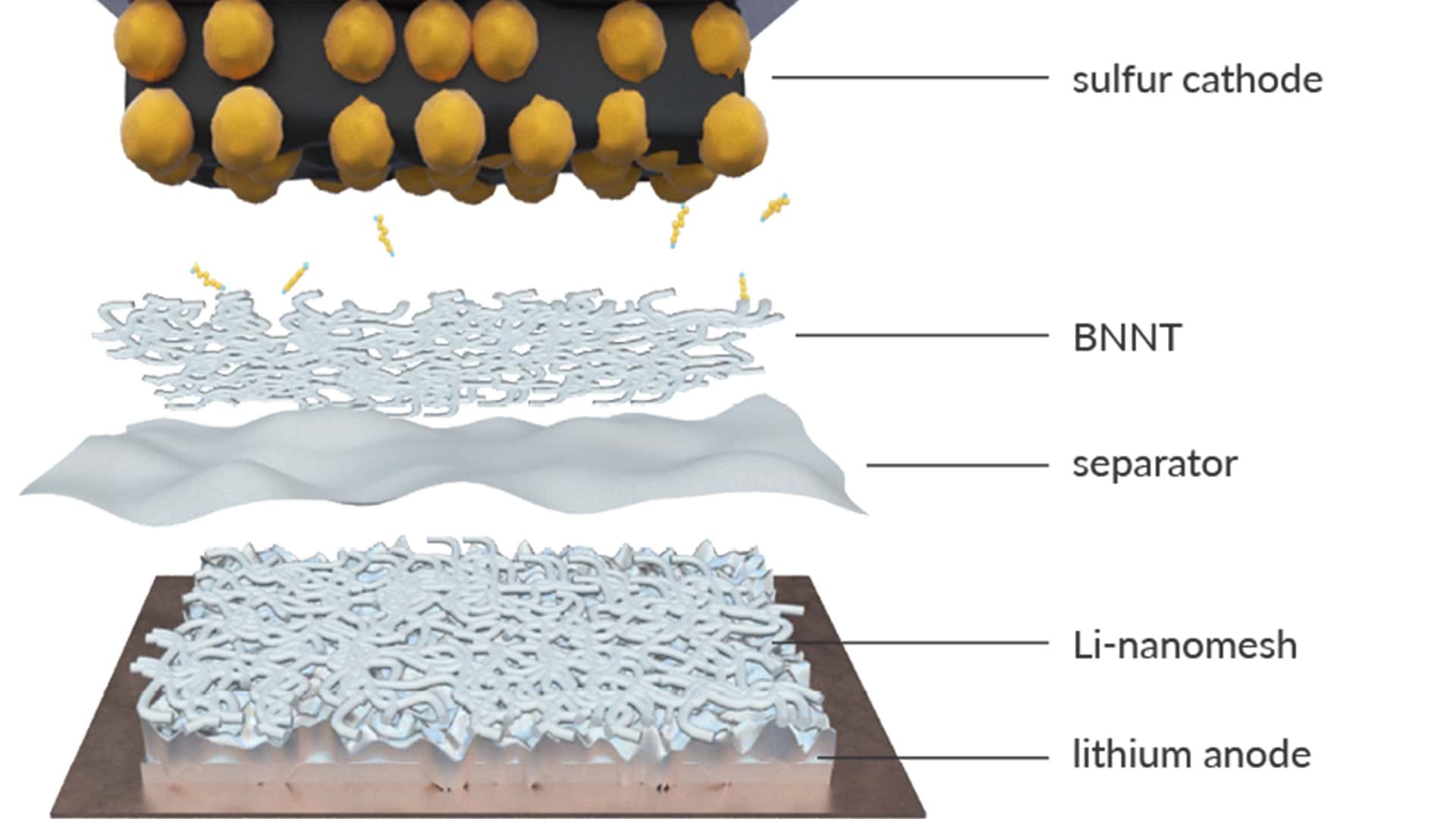
Brisbane-based battery technology company Li-S Energy announced recently the development of its first 20-layer battery cells that are based on its third-generation semi-solid state lithium-sulfur technology.
The new 20-layer cells use a low-flammability electrolyte – a battery component that moves charge-carrying ions during charging and discharging – that is safer than the traditional lithium-sulfur and lithium-ion cells that use a high-flammability electrolyte, said the company via a press release.
To curb dendrites – the metal filaments that can short out the battery cell – and further improve safety, Li-S Energy has used its patented li-nanomesh technology, wherein the cells use what the company calls boron nitride nanotubes (BNNTs).
Li-S Energy’s 20-layer battery cells have a volumetric energy density of 540 Watt-hours per liter, a 45 percent increase compared to its second-generation cells. The cells also achieved a gravimetric density of 400 Watt-hours per kilogram. Volumetric density is the amount of energy contained within a given volume, while gravimetric density is the amount of energy stored per weight unit.
To put that in perspective, CATL, the world’s largest battery manufacturer announced last year that its third-generation cell-to-pack lithium iron phosphate (LFP) battery cells have an energy density of 290 Wh/l and 160 Wh/kg, respectively. Meanwhile, CATL’s third-generation nickel-cobalt-manganese (NCM) cells carry an energy density of 450 Wh/l and 250 Wh/kg.
Tesla’s 4680 cells, available on the Model Y AWD, have an estimated energy density between 272-296 Wh/kg.
In simple terms, the 20-layer cells carry the same physical size as existing lithium-ion cells, but with half the weight, according to the company. Although Li-S Energy expects its new technology to be used in drones and aviation. It didn’t mention its usage in electric cars.
Either way, breakthroughs in battery technology can only be a good thing, as more energy density can enable a longer driving range, potentially offering a cure for range anxiety, which according to several surveys is a stumbling block in the faster adoption of electric vehicles.

